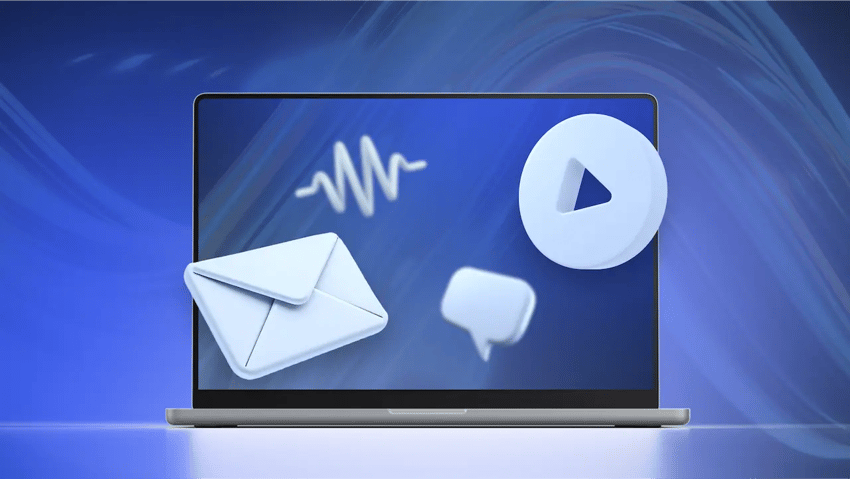Sales enablement technology ensures that the sales team has the tools they need to engage buyers, move them through the buying process, and ultimately sell more. It can include strategies to ensure that marketing teams are on the same page as sales reps or leverage better qualification processes to create more efficient sales operations.
Understandably, sales enablement is a priority for many businesses that are trying to find new ways to accelerate their sales pipeline. Fortunately, there are different types of sales enablement tools on the market that can help your team close more deals.
Why Is Sales Enablement Technology Needed?
Sales enablement teams that are equipped with software see significant results, including benefits like ramping faster, executing strategies more effectively, or being more consistent when it comes to hitting their quotas. Here’s how.
Shorter ramp time
Sales enablement tech allows for structured onboarding with LMS modules and real-time playbooks. This can help new sales reps shift from “new hire status” to “quota crusher” faster and ensure consistent training for all team members.
Smarter workflows
Automation tools like auto dialer software or autoresponder email campaigns significantly reduce manual effort (and potentially manual mistakes!). They can slash the amount of administrative or repetitive tasks sales teams need to handle so your reps can focus on high-impact conversations and lead nurturing.

Better customer experience
When sales reps have the tools they need to do their jobs well, they show up more prepared. Customer relationship management (CRM) integrations and content insights give them the information they need to create more personalized pitches and customer calls.
Faster speed-to-lead
Tools like click-to-call and preview dialers make it easier to review a customer’s history and respond to inbound leads within seconds. You can optimize the outreach process and generate more pipeline quickly.
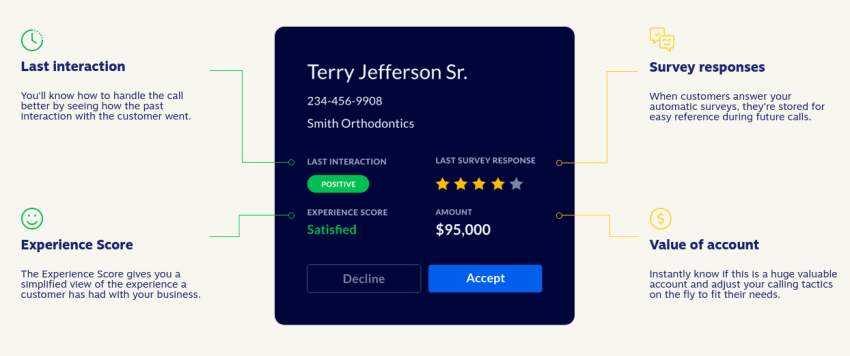
Core Features of Sales Enablement Platforms
There are different types of sales enablement technology that teams can consider. Let’s review the key features that you should look for.
1. Sales engagement tools
These tools enable multichannel outreach across phone, SMS, email, and even video campaigns. Ideal platforms (like Nextiva) include:
- Sales dialers: Preview and power dialers let sales reps review context before calling or make back-to-back calls automatically.
- Voicemail drop: Reps can leave prerecorded and personalized messages with a click, skipping the call altogether.
- Multichannel sequencing: Automate outreach with customizable cadences using SMS, email, and phone campaigns.
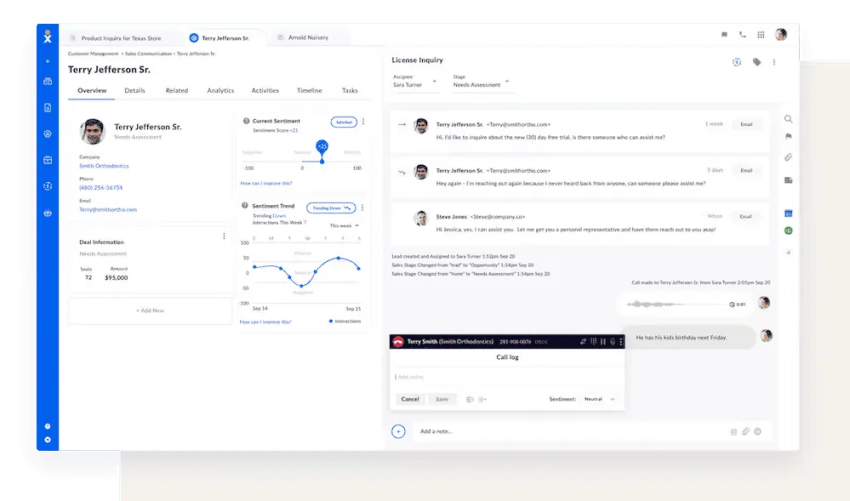
2. Inbound call handling
When it comes to closing deals, speed matters. Sales professionals are 21x more likely to convert a prospect if they respond within five minutes of lead generation and outreach. These platforms are essential for sales call centers and should include features like:
- Call routing: Instant call routing to the right sales reps based on location, availability, and expertise.
- CRM screen pops: Show caller history for more personalized pitches.
- Real-time sentiment analysis for inbound conversations: Assess customer sentiment during calls to improve the sales enablement process based on actual feedback.
3. Sales content management
A robust content management system ensures that salespeople always have access to relevant content at the right time. Key features should include:
- Content tagging systems: Sort content into categories like case studies, playbooks, product one-pagers, and email templates for easy access.
- Dynamic content recommendations: Get AI-powered suggestions during live calls based on how the conversation unfolds.
- Integrated learning libraries: Facilitate improved onboarding and sales training with sales and marketing content libraries.
4. CRM integration
Sales enablement software must integrate with CRMs like Salesforce, HubSpot, and Zoho CRM. They should have sales tools that can assist with functions like:
- Auto-logging sales activities: Document all sales activities, including responses to go-to-market initiatives, follow-up campaigns, and more.
- Triggering workflows based on call outcomes: Automate the sales process for individual customer calls.
- Tracking content usage: Monitor usage by sales stage and persona to determine which content is needed.
5. Real-time coaching and sales intelligence
Sales enablement managers are always looking for ways to provide coaching and training opportunities, and some sales tools can help with this. They should include features like:
- Live call monitoring: Leverage sentiment analysis and live call tracking to provide real-time feedback.
- Objection handling: AI-generated objection handling cards can help sales reps think on their feet effectively.
- Playbook adherence tracking: Options may include BANT, SPIN, and SPICED, which help managers determine how closely sales reps are sticking to the playbooks.
- Conversation intelligence: Understand why sales calls are unfolding the way they do with actionable insights.

6. Analytics and reporting
All sales enablement platforms should have detailed analytics so you can track essential KPIs. These KPIs should include:
- Speed-to-lead response time.
- Call connection rates.
- Call outcomes and win rates.
- Lead source performance.
- Sales coaching effectiveness and onboarding progress.
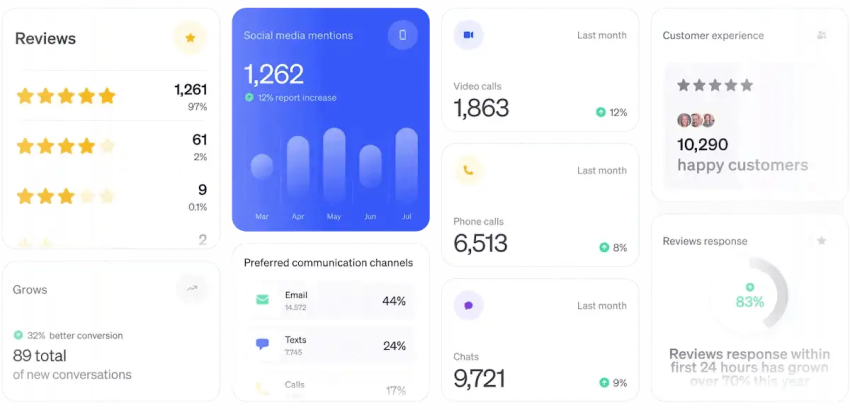
Some tools now offer AI insights, which leverage AI to detect patterns and provide actionable insights for improvement based on even complex sales data.
Top Sales Enablement Tools (By Function)
There are plenty of different sales enablement solutions on the market. It’s important to understand what your options are and how they work.
Here are the most common types of sales enablement technology:
- Dialers and outreach: Sales dialers can be used for outbound campaigns, offering benefits like automated dialing to minimize agent idle time.
- CRMs: Some CRMs come with essential features like sales and marketing automation for better lead hand-offs, automated follow-up options, and pipeline tracking.
- Content management: Track, optimize, and collaborate on content that the sales team needs to close more deals.
- Video messaging: Create training content for sales teams or sales resources for individual leads.
- Sales intelligence: Identify prospects, build lists, and capture information like contact data, industry, or intent.
- Intent and data: Get clear information about a lead’s buyer intent signals, like whether they’re in-market or what tech stack they’re already using.
- LMS and training: Create valuable training resources to improve sales team performance.
Here’s a breakdown of some of the best tools on the market in 2025 in each category.
| Category | Tools |
|---|---|
| Dialers and Outreach | Nextiva, Outreach, Salesloft, Apollo |
| CRM | Salesforce, HubSpot, Zoho CRM, EngageBay |
| Content Management | Highspot, Seismic, Showpad, Guru |
| Video Messaging | Vidyard, Loom |
| Sales Intelligence | LinkedIn Sales Navigator, ZoomInfo |
| Intent and Data Tools | 6sense, Demandbase, Hunter |
| LMS/Training | Lessonly, Brainshark, Allego |
Benefits of a Unified Sales Enablement Stack
There are plenty of benefits of sales enablement programs that take advantage of a unified tech stack. Let’s discuss each.
Higher sales productivity
When your team can use a tool like Nextiva to integrate with your CRM, view an entire lead’s history, dial the number in a single click, and get real-time suggestions based on the call’s progression, they’re saving time. Less time switching between tools means more time selling and a more productive sales organization overall.
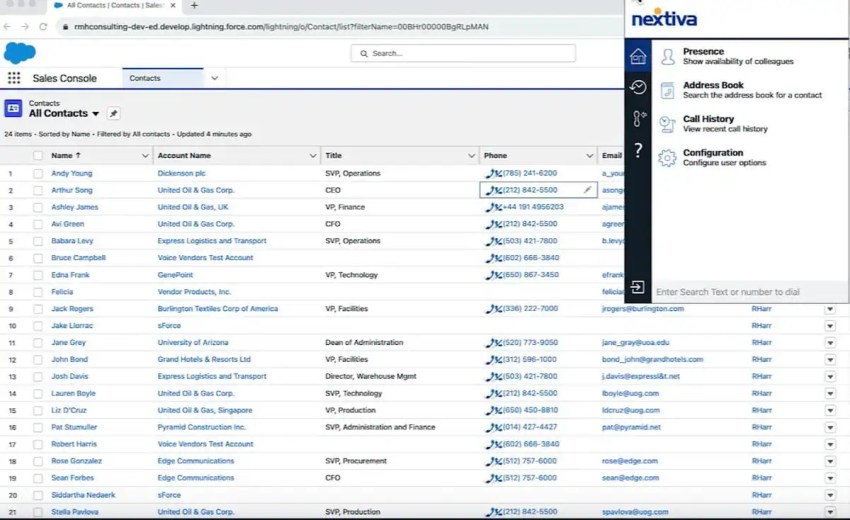
Increased deal size
As your team gets better insights on everything from sentiment analysis to objection handling and timing, you can make data-driven decisions. Your team can put together smarter pitches and close deals more effectively.
Improved sales performance metrics
Sales enablement tools can facilitate faster follow-ups, better call quality, and clearer sales playbook execution. This creates better experiences across the entire buyer’s journey and helps your sales team’s performance skyrocket.
Faster onboarding
AI-generated training, templates, and sales rep tracking can streamline enablement efforts. You’ll be able to create consistent and easily monitored training programs that can be improved over time based on advanced performance data.
Better forecasting
A connected tech stack allows sales leaders to track funnel performance across the entire sales cycle. They’ll also be able to assess individual rep activity and progress, provide training opportunities, and estimate deal velocity more accurately.
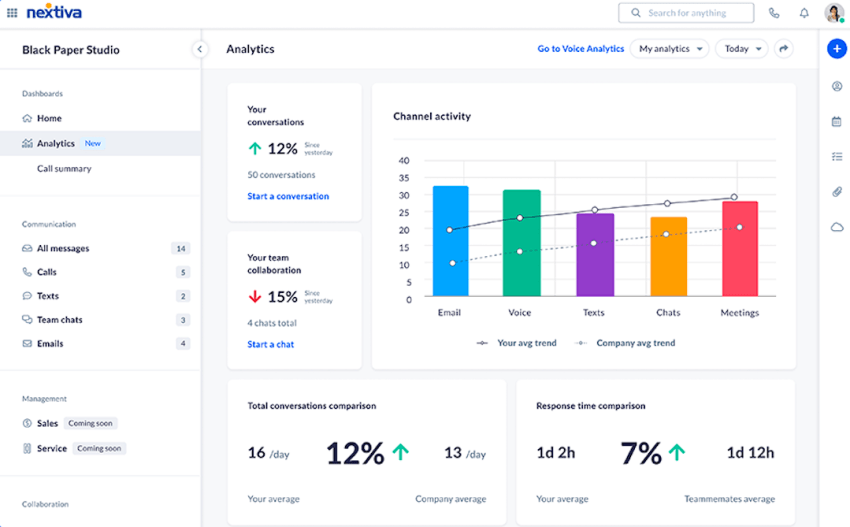
How to Choose the Right Sales Enablement Platform
When you’re choosing a sales enablement platform, ask the following questions:
- Does it integrate with our CRM and current tech stack?
- Can we customize it by persona, product line, or sales stage?
- Does it support both outbound sales campaigns and inbound lead routing?
- How does it support real-time coaching and feedback?
- Can it provide clear, actionable analytics that align with our sales enablement KPIs?
- Is it built for scalability as our team and product lines grow?
It’s important to understand how different platforms will help your sales team. They can increase productivity with features like outbound dialers and CRM integrations. AI-powered insights or real-time conversation suggestions can create better experiences for potential customers.
Most platforms either offer free trials or professional demos. Take advantage of these opportunities to determine which platform will benefit your team most, and address any bottlenecks in your existing sales enablement processes.
Nextiva Is Built for the Modern Sales Team
Nextiva is a UCaaS platform that’s built for modern sales teams. It has plenty of sales enablement features that can help you improve your processes, expand your pipeline, and close more deals.
Key features include:
- Unified communications: Leverage phone, SMS, email, and video in a single app that connects directly to your CRM.
- AI playbooks and agent assist: Use real-time prompts and sales methodology tracking to guide reps during live calls, improving their performance.
- Call transcripts and analytics: Trade in guesswork for full visibility into what’s being said and how deals are progressing.
- Inbound and outbound support: Run cold-calling, follow-up, or response campaigns with inbound and outbound leads.
- Automation: Streamline processes with features like dialer software and workflow automation to save your team time.
- 24/7 support and expedited onboarding: Receive award-winning service and a team dedicated to enabling your success.
Unified Customer Experience Management Platform
Ready to help your sales teams scale up their inbound & outbound campaigns? Unified-CXM brings all customer interactions into one AI-powered platform.


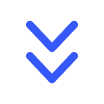














 Productivity
Productivity 








